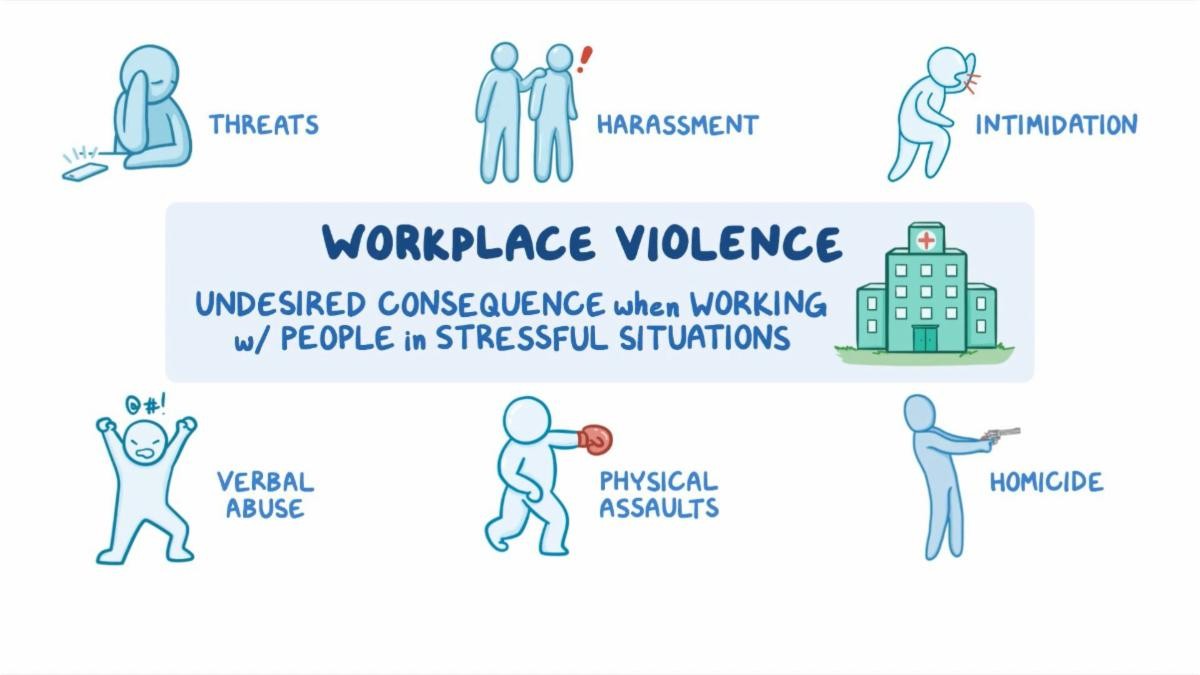Comprehensive Checklist for California Workplace Violence Prevention Compliance
Comprehensive Checklist for California Workplace Violence Prevention Compliance
Blog Article
The Duty of Employee Training and Awareness in Enhancing Work Environment Violence Avoidance Initiatives Across Various Industries
The integration of employee training and recognition right into work environment physical violence avoidance campaigns is increasingly identified as a basic facet of organizational safety across varied industries. Understanding these subtleties may reveal techniques that can considerably boost safety and security methods and worker confidence in risky settings.
Significance of Training Programs
In today's vibrant work setting, the value of training programs can not be overemphasized, particularly in the context of workplace violence avoidance. These programs function as a fundamental component in growing a secure and secure workplace society. By equipping employees with the understanding and skills required to identify, mitigate, and react to possible dangers, organizations can promote an environment that prioritizes safety and security and health.
Reliable training programs do more than merely instruct; they encourage workers to acknowledge warning signs of violence, recognize the methods for reporting occurrences, and establish techniques to de-escalate potential conflicts. Furthermore, they infuse a sense of cumulative responsibility among personnel, motivating aggressive participation in maintaining a safe work environment.
Financial investment in training not only improves employee awareness however additionally demonstrates an organization's dedication to safeguarding its workforce. This positive technique can lead to lowered cases of work environment physical violence, reduced absenteeism, and improved worker spirits. Ultimately, extensive training programs are indispensable to developing a resistant business culture that values security and promotes a healthy and balanced job environment, thus decreasing the threat of violence and its linked repercussions.
Trick Components of Effective Recognition
A comprehensive recognition program includes a number of essential elements that are crucial for successfully preventing work environment physical violence. Initially, clear communication of plans and treatments connected to work environment violence is critical. Workers have to be informed about the company's position on physical violence and the details procedures in location for reporting events.
Second, training sessions should include practical situations that staff members might come across. This useful approach assists staff members identify alerting indications of potential physical violence and outfits them with the necessary skills to de-escalate strained situations. Third, promoting a supportive work environment culture is essential; workers should really feel equipped to speak up without fear of revenge.
Incorporating feedback devices allows workers to share their experiences and understandings, which can lead to constant enhancement of recognition campaigns. By incorporating these parts, organizations can develop a durable structure for preventing office physical violence, eventually adding to a safer and more efficient atmosphere for all staff members (california workplace violence prevention).
Industry-Specific Training Techniques
Reliable office violence prevention training must be customized to the special obstacles and dangers faced by particular markets. For instance, medical care atmospheres require training that attends to the high probability of encounters with aggressive patients or site visitors. Programs must concentrate on de-escalation techniques, recognizing warning signs of possible violence, and making sure staff realize the significance of reporting events.
On the other hand, retail settings may encounter different dangers, such as robbery or client disputes. Training in these atmospheres need to emphasize situational awareness, feedback methods during emergencies, and the significance of safeguarding money and belongings.
Manufacturing and building industries present their own risks, frequently associated with social disputes or dangerous working problems. Training in these sectors need to include methods for dispute resolution, promoting a culture of security, and encouraging open interaction amongst workers.
Additionally, company offices might article need training fixated Read More Here preventing harassment and bullying, cultivating a considerate workplace culture, and executing clear reporting systems. Each market needs to not only identify its specific vulnerabilities but additionally adapt training materials to reverberate with the labor force effectively, making certain that employees feel equipped and encouraged to deal with possible fierce circumstances.
Determining Educating Effectiveness
Reviewing the influence of workplace violence avoidance training is vital for making sure that staff members are appropriately prepared to take care of potential hazards. Pre- and post-training studies can evaluate adjustments in employee expertise, attitudes, and actions concerning workplace violence.
In addition, functional assessments, such as role-playing scenarios or simulations, can supply insights into just how well workers use found out skills in real-life scenarios. Keeping track of occurrence reports prior to and after training can additionally work as a sign of efficiency, as a decrease in occurrences may mirror improved staff member preparedness.
In addition, feedback from individuals must be systematically accumulated to determine areas for renovation in training content and delivery. Carrying out follow-up examinations at routine periods aids sustain recognition and reinforces training concepts gradually - california workplace violence prevention. By using a thorough technique to determining training efficiency, companies can make certain that their work environment physical violence avoidance initiatives cultivate a more secure environment and boost overall worker well-being
Building a Culture of Safety

Educating plays a pivotal duty in this social change. Normal, thorough training sessions enlighten staff members regarding acknowledging caution indicators of work environment violence and the suitable reactions. Urging open interaction allows workers to voice worries without worry of retaliation, advertising collective responsibility for safety.
Additionally, integrating safety and security into daily operations guarantees that it ends up being a common value rather than a simple conformity issue. This includes routine safety and security drills, updates on plans, and feedback systems that include workers in safety and security conversations and improvements.
Ultimately, a robust culture of security not just minimizes the threats of office violence but also enhances employee morale and productivity. By fostering an environment where safety is a fundamental priority, organizations can create resilient workplaces that support both specific health and cumulative success.
Verdict
In conclusion, worker training and awareness are crucial components in the avoidance of workplace violence throughout various sectors. Effective training programs, customized to specific market demands, enhance workers' ability to recognize and react to prospective threats.

Normal, thorough training sessions enlighten staff members concerning recognizing caution indicators of office physical violence and the ideal feedbacks.In verdict, staff member training and recognition are essential parts in the avoidance of work environment violence across various industries.
Report this page